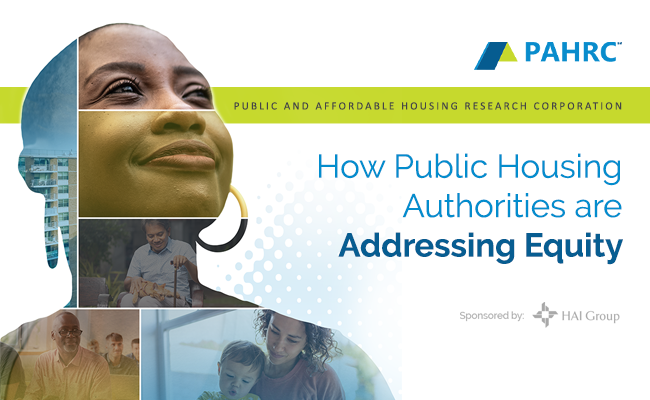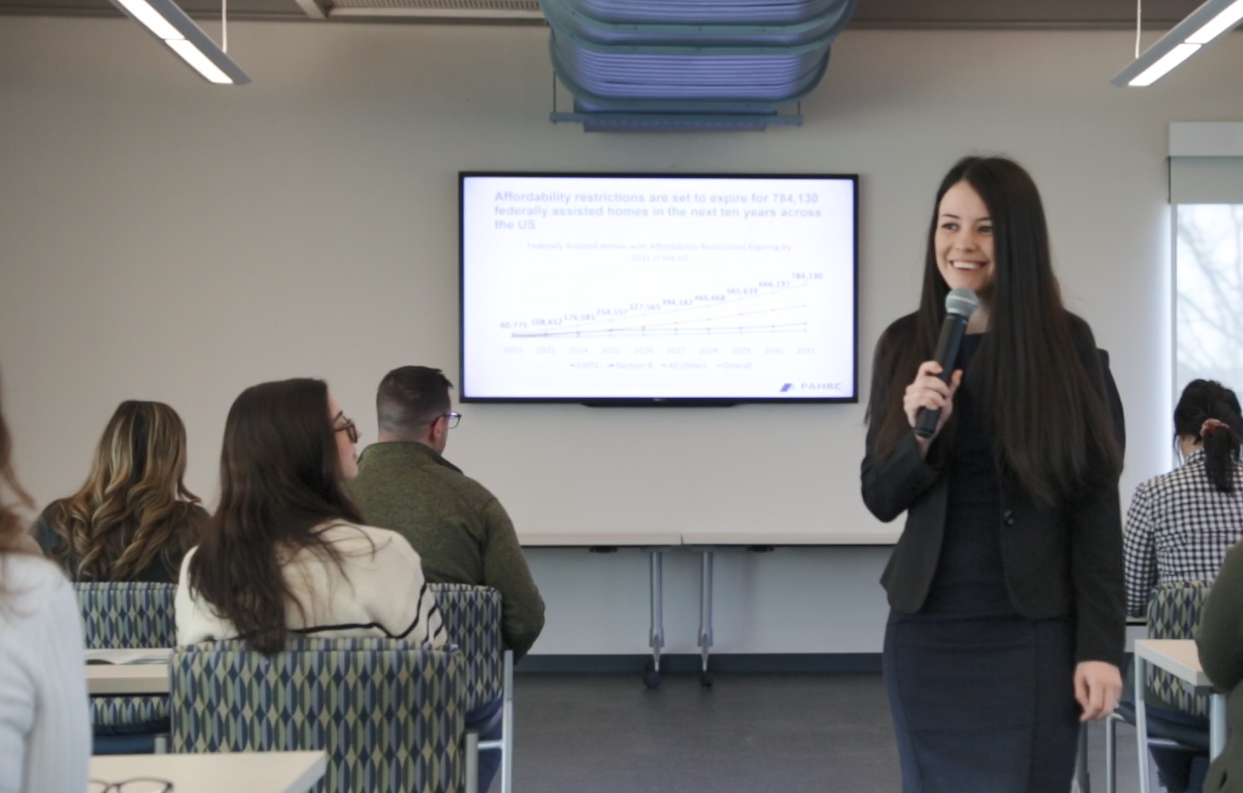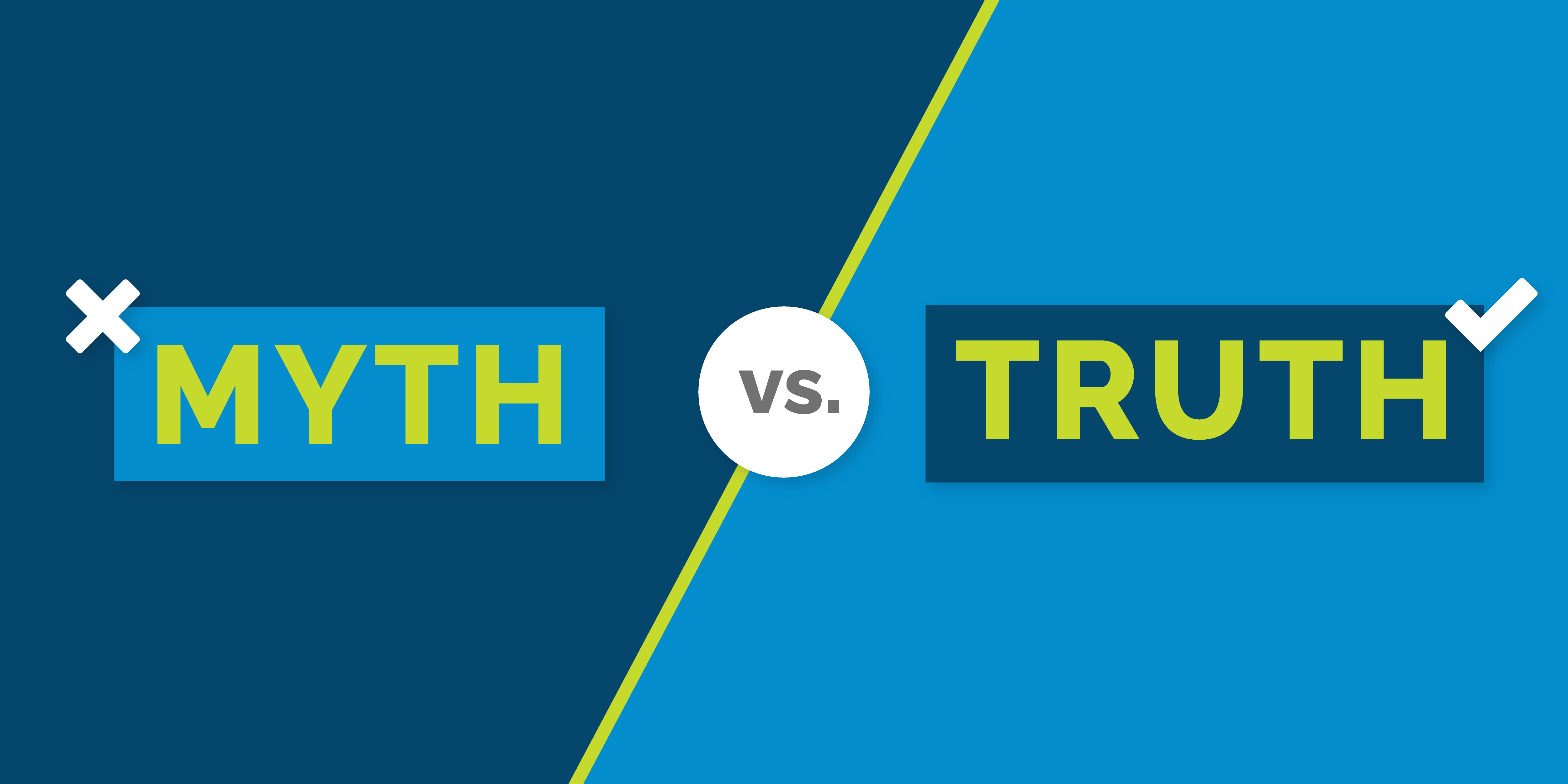The word ‘equity’ has become a buzzword in today’s social landscape. And when it comes to public housing authorities (PHAs), striving to achieve equitable outcomes through their policies, practices, and partnerships is a continuous goal. Although it can be challenging to implement initiatives when PHAs face hardships, from funding constraints to a lack of community partners, many organizations are making this happen. To help PHAs learn from their peers, the Public and Affordable Housing Research Corporation (PAHRC) surveyed PHAs about their equity initiatives and the resources needed to expand this work. This data came together to form PAHRC’s latest report, How Public Housing Authorities Are Addressing Equity. The report, which HAI Group sponsored, also includes a resource guide that outlines the strategies PHAs can pursue to help residents of all backgrounds achieve successful outcomes.
HAI Group’s Staci Canny sat down with PAHRC’s Lead Research Analyst Kelly McElwain, and Eric Brushett, a research analyst at PAHRC, to discuss this report.
Staci Canny: Thank you both for taking the time to talk with me about your latest research. When it comes to equity in terms of its relationship to PHAs, why is this important for agencies to incorporate it into their policies, programs, and operations?
Kelly McElwain: PHAs often serve the community's most vulnerable members, so it’s important for PHA staff to consider the additional support marginalized groups need to overcome the long-term impacts of discrimination and rise out of poverty. While the 1968 Fair Housing Act prohibited housing discrimination based on race, national origin, disability status, and gender, discrimination and the impacts of discriminatory housing policies and practices, persist today. Addressing these disparities and implementing practices that promote equity requires support from many community partners – service providers, local governments, federal agencies, Congress, and of course, affordable housing providers.
Eric Brushett: So, some of the ways that this can come into play for a PHA could be revising admissions policies to make it easier for people with a criminal background to obtain housing assistance, staffing a housing navigator to help a voucher holder locate a landlord willing to accept their voucher, or intentionally building affordable housing in amenity-rich areas. PHAs can also support equity by developing partnerships to bring transit, employment, and educational opportunities to residents, building new affordable housing or applying for more vouchers to serve more families in need, or incorporating universal design principles to improve accessibility for people with mobility limitations.
SC: Based on the PHAs you surveyed, what are some of the most common strategies they’re pursuing to advance equity?
KM: Some of the most common strategies our data showed were PHAs offering additional services, training staff, and recruiting and educating landlords to encourage them to accept vouchers. And regarding internal plans to improve diversity, equity, and inclusion, also known as DEI, among staff, PHAs commonly noted that they’re offering DEI training, incorporating these principles into the agency’s strategic plan, and developing hiring practices to encourage a diverse candidate pool.
SC: Can you share some examples of PHA-led equity initiatives in action?
EB: Sure. On the west coast, San Francisco Housing Authority developed an internal racial equity plan to improve staff diversity, and Seattle Housing Authority created a racial social justice toolkit so that employees proactively consider the racial and social implications of their day-to-day decisions. Indiana’s Fort Wayne Housing Authority administers a Youth Build program to help young adults without a high school diploma develop occupational skills to qualify for living-wage jobs. And Boston Housing Authority established Healthy Homes Initiatives, including adopting healthy homes design principles in development efforts, integrated pest management practices, and partnering with local non-profits to provide services to improve its residents' living conditions and health outcomes.
SC: Sounds like some great initiatives. I can imagine that implementing policies and programs like those can be challenging. What are some of the biggest obstacles PHAs are facing that prevent more of these initiatives from happening?
KM: PHAs are historically constrained by funding shortfalls and have limited flexibility to reallocate funding towards resources or programs their residents need most. On top of that, they often depend on in-kind support from non-profit service providers, private companies, foundations, and state and local programs. So, when a PHA is in a low-resource jurisdiction, locating partners or funding to support their initiatives can be difficult.
SC: One statistic I wanted to note from your report is that more than four out of five PHAs surveyed mentioned that they developed a policy or program to help residents achieve successful outcomes. However, only one in five reported having initiatives to increase equity. Why do you believe this is the case?
EB: Well, I first want to mention that although only a small portion of surveyed PHAs believed they implemented an equity initiative, these organizations may still administer programs and policies that can support equitable outcomes. Over 80% mentioned implementing a strategy to improve client outcomes, such as offering additional services or partnerships. But one of the most common reasons PHAs mentioned not developing an equity initiative was a lack of time and resources.
While this is entirely understandable, it’s important for PHAs to consider all the ways, both big and small, that they can improve their everyday operations to promote equity and best serve their residents. So, something as easy as simplifying the language on forms and materials for residents can go a long way to improve accessibility. Or a PHA can implement fair screening criteria and strategies to improve voucher utilization to expand the number of vulnerable community members receiving housing assistance.

Pictured above is a figure from PAHRC's report, “How Public Housing Authorities are Addressing Equity.” This tabulation represents data collected from a 2022 survey of 83 PHAs across the country.
SC: These are some great tips. Can you tell us where PHAs can find more examples of strategies to incorporate equity into their operations?
KM: PHA Policies and Practices that Promote Equity, an accompanying resource for our report, describes specific strategies that PHAs can incorporate into policies and practices. I also recommend checking out Vera Institute’s Opening Doors report for information on developing re-entry programs and policies, HUD’s Public Housing Occupancy Guidebook, discussing policy development to promote fair housing, Urban Institute’s Trauma-Informed Community Building and Engagement guide on resident programming, HUD’s Healthy Homes Program Guidance Manual on building design practices that promote health, and HUD’s HCV Utilization training, which covers ways to expand the impact of a voucher program.
SC: Kelly and Eric, thank you for sharing this information.
To learn more about implementing equity initiatives at your agency, access PAHRC’s report, How Public Housing Authorities Are Addressing Equity.
This article is for general information only. HAI Group® makes no representation or warranty about the accuracy or applicability of this information for any particular use or circumstance. Your use of this information is at your own discretion and risk. HAI Group® and any author or contributor identified herein assume no responsibility for your use of this information. You should consult with your attorney or subject matter advisor before adopting any risk management strategy or policy.
HAI Group® is a marketing name used to refer to insurers, a producer, and related service providers affiliated through a common mission, management, and governance. Property-casualty insurance and related services are written or provided by Housing Authority Property Insurance, A Mutual Company; Housing Enterprise Insurance Company, Inc.; Housing Specialty Insurance Company, Inc.; Housing Investment Group, Inc.; and Housing Insurance Services (DBA Housing Insurance Agency Services in NY and MI).





